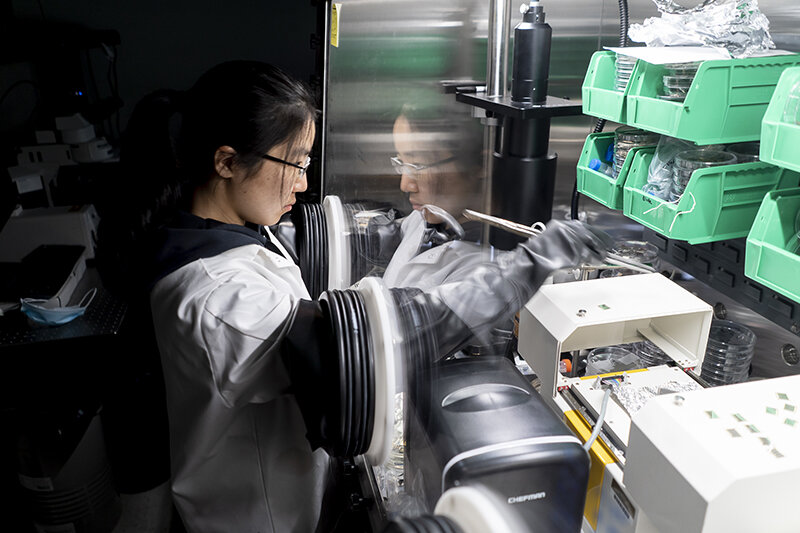Engineers improve solar cell efficiency, stability
Purdue University researchers have created new, multifunctional ligands that improve the charge transfer, power conversion capability and long-term stability of perovskite solar cells.
Perovskite is a material that can be formed from different elements to have a variety of electrical, optical and physical characteristics. Perovskite can be manufactured as solar cells with simple techniques similar to printing newspapers; the techniques cost less and use less energy than those used to produce traditional silicon cells.
Perovskite solar panels are also much thinner and lighter than silicon panels, making the transportation and installation cost lower. They can be made lightweight and mechanically flexible and portable. But Letian Dou, the Charles Davidson Associate Professor of Chemical Engineering in the Davidson School of Chemical Engineering, said perovskite solar cells have traits that limit their effectiveness.
“These solar cells lack an effective charge transfer and are unstable and vulnerable under prolonged light exposure, which often leads to degradation,” Dou said. “Poor stability means a shorter product lifetime, and consumers will need to replace a panel more frequently. Perovskite may not be stable for 25 years like silicon, but at least 10 years is required for successful commercialization. Replacing the panels also adds to the labor cost.”
Dou said traditional solar cells require a critical interface between perovskite and the organic charge collection layer. He said a molecular “glue” is needed, but conventional molecules block the current flow.
“Our conjugated ligands have a perfect fit into the perovskite crystal lattice and can help build a 2D-on-3D perovskite heterostructure, which further enhances the solar panel’s stability,” Dou said.
Dou and his team have tested the innovative ligands in their laboratory.
“We achieved near 25% power conversion efficiency with the ligands, compared to less than 20% without them,” Dou said. “We also improved the lifetime to more than 2,400 hours tested at 65 degrees Celsius, which is four times longer than without the ligands.”
Dou and his team are taking additional steps to improve the ligands.
“We are working on new ligands to further what we’ve already achieved: more than 25% power conversion efficiency and more than 10,000 hours of operational lifetime,” Dou said. “We also are working to apply the ligands in larger-area solar modules. We look to achieve these goals within a year or so.”
Dou disclosed the conjugated ligand innovation to the Purdue Research Foundation Office of Technology Commercialization, which has applied for patent protection on the intellectual property.
Dou’s previous research was published in the July 2021 issue of Advanced Materials and the January 2021 issue of Angewandte Chemie.
More information:
Ke Ma et al, Multifunctional Conjugated Ligand Engineering for Stable and Efficient Perovskite Solar Cells, Advanced Materials (2021). DOI: 10.1002/adma.202100791
Aihui Liang et al, Highly Efficient Halide Perovskite Light‐Emitting Diodes via Molecular Passivation, Angewandte Chemie International Edition (2021). DOI: 10.1002/anie.202100243
Citation:
Engineers improve solar cell efficiency, stability (2023, January 18)
retrieved 18 January 2023
from https://techxplore.com/news/2023-01-solar-cell-efficiency-stability.html
This document is subject to copyright. Apart from any fair dealing for the purpose of private study or research, no
part may be reproduced without the written permission. The content is provided for information purposes only.
For all the latest Technology News Click Here
For the latest news and updates, follow us on Google News.

